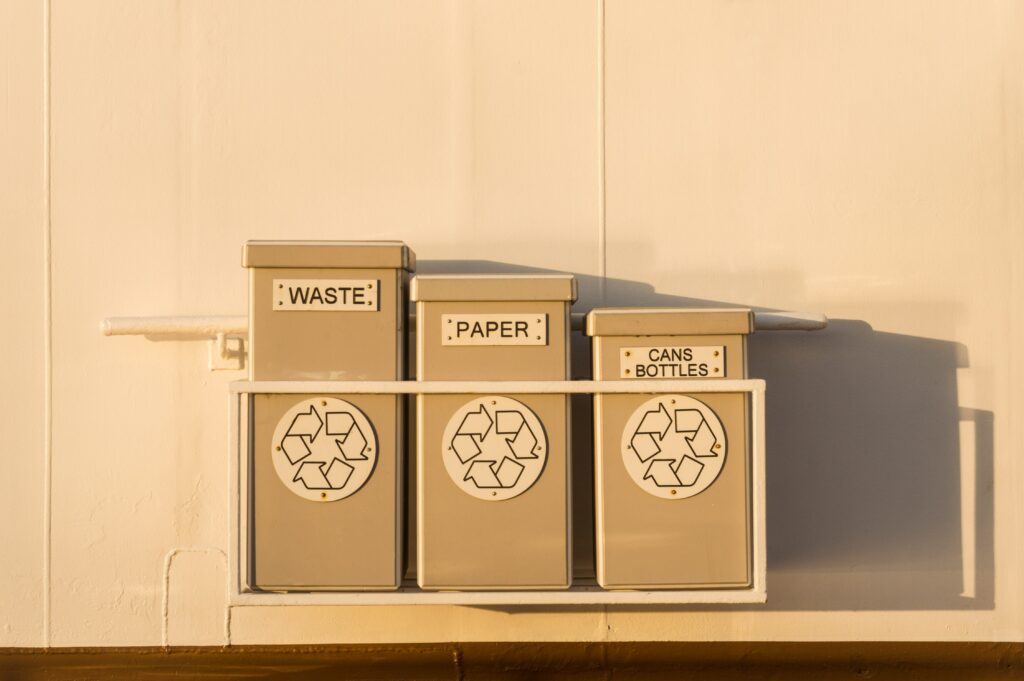Protecting the environment is one of our core values for both cruise companies and travellers alike, and innovations and green technology are making ships more eco-friendly than ever as the industry bids to minimise the environmental impact of ships while maintaining the leisure and travel experience for passengers.
In fact, technological progress has played a crucial role in advancing the sustainability initiatives within the cruise industry.
Cruise ship management experts COLUMBIA cruise services look at some of the various practices and technologies aimed at reducing pollution, conserving resources, and reducing the impact of cruise ships on the ocean.

Cleaner fuels: Many cruise lines are investing in innovative technologies to reduce emissions and fuel consumption and this includes the use of liquefied natural gas (LNG) as a cleaner fuel alternative. However, some operators are opting for a different approach, retrofitting their existing vessels with hybrid technology. This includes installing new engines, catalytic reduction modules, green hydrogen fuel cells, and utilising unconventional fuel sources such as dead fish.
Ship Design: A ship’s design is also key to increasing efficiencies. An example of this is using an Air Lubrication System (ALS), so that bubbles are created below the hull of the ship to allow it to glide through the water more easily.
Waste Management: Cruise ships are implementing advanced waste management systems to minimise the generation of solid waste and ensure proper disposal and recycling of materials onboard, helping to minimise the amount of waste sent to landfills. This includes recycling programmes for paper, plastic, glass, and metal, as well as treatment systems for wastewater and sewage.

Energy Efficiency: Cruise lines are adopting energy-efficient technologies and practices to reduce energy consumption onboard. This may include LED lighting systems, energy-efficient appliances, optimised HVAC (heating, ventilation, and air conditioning) systems, and shore power connections to reduce the use of onboard generators while docked.
Shore Power Connections: A simple way cruise lines can cut down on emissions is to plug into shoreside power. Cruise ports equipped with shore power facilities allow ships to plug into the local electrical grid while docked, reducing the need to run onboard generators and mitigating air pollution in port areas.
Advanced Wastewater Treatment Systems: Cruise ships are incorporating advanced wastewater treatment systems to treat sewage and greywater onboard before discharge. These systems help prevent pollution of marine environments and ensure compliance with stringent environmental regulations.
Renewable Energy: Some cruise lines are integrating renewable energy sources such as solar panels or wind turbines into their ships’ designs to supplement onboard power generation, helping to reduce reliance on fossil fuels and lower emissions.

Environmental Monitoring and Reporting: Cruise lines are implementing robust environmental monitoring systems to track emissions, energy consumption, and other environmental metrics. This data helps identify areas for improvement and ensures compliance with regulations.
Sustainable Sourcing and Operations: There is an increasing focus on sustainable sourcing practices for food, supplies, and other onboard resources. Additionally, cruise lines may implement measures to reduce single-use plastics and promote conservation efforts during shore excursions.
Overall, sustainable cruising involves a holistic approach that considers environmental, social, and economic factors to minimise the ecological footprint of cruise operations while providing enjoyable travel experiences for passengers.
By adopting green technologies, implementing responsible practices, and fostering collaboration with stakeholders, the cruise industry can work towards a more sustainable future for ocean travel.

